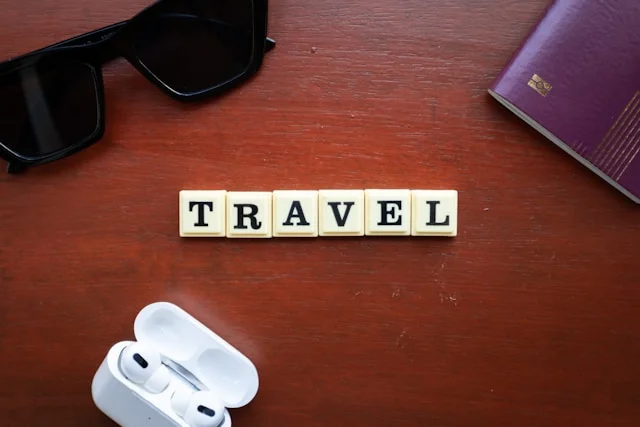Seasonal Guide: The Best Time to Visit Panama for Perfect Weather

Panama offers a wide variety of unique experiences because of its distinctive location
This modern city boasts some of the most spectacular colonial-era landmarks and idyllic beaches. With its strategic location linking North and South America, Panama attracts tourists year-round. Its rich biodiversity features lush green rainforests, dry forests, and stunning coastlines on both the Pacific and Caribbean. Whether you’re a nature lover, a beachgoer, or a history buff, Panama has something to offer. But to make the most of your trip, it’s essential to know the best time to visit Panama for perfect weather.
When is the Best Time to Visit Panama for Perfect weather?
If you’re planning a trip and wondering about the best time to visit, here’s what you need to know. Panama has a tropical climate with two main seasons: the dry season (verano) and the wet season (invierno). While you can technically visit Panama at any time of the year, the dry season—from January to mid-April—is the most popular among travelers.
During this period, the weather is mostly dry, warm, and sunny with temperatures ranging from 27°C to 30°C. While the skies may be partly cloudy, rainfall is minimal, making it ideal for beach days, jungle hikes, and city tours. However, it’s worth noting that the Caribbean side of Panama (e.g., Bocas del Toro) may still experience occasional showers due to its unique microclimate.
When booking flights to Panama from the UK or elsewhere, consider scheduling your trip during these drier months. The combination of ideal weather, vibrant local events, and outdoor activities makes this period the best time to explore Panama’s diverse offerings.
Season Guide: Visiting Panama in Every Season
Being close to the equator, Panama experiences consistent temperatures year-round, generally ranging from 24°C to 31°C. However, rainfall divides the year into two major seasons—dry (summer) and wet (winter).
Let’s look at each season and what it offers travelers:
Summer
Panama’s summer (dry season) typically runs from December through mid-April. This is the peak tourist season and offers the most reliable weather for outdoor adventures. With fewer showers and more sunshine, this season is ideal for:
-
Exploring Panama City: Visit Casco Viejo, the Panama Canal, or take a day trip to the Pearl Islands.
-
Beach escapes: The Pacific beaches like Playa Venao and the San Blas Islands shine during this time.
-
Nature hikes: With trails drier and more accessible, it’s a great time for hiking in Boquete or trekking through the rainforest.
Popular Events During Summer
-
Panama Jazz Festival (January): A globally recognized cultural event in Panama City.
-
Carnaval (February or March): One of the country’s biggest celebrations, especially vibrant in Las Tablas.
-
Semana Santa (Holy Week): Celebrated nationwide with religious processions and beach outings.
Despite being the dry season, occasional short showers can occur—especially in Caribbean areas like Bocas del Toro or Colón. However, these don’t usually last long and rarely affect travel plans.
-
Winter
Panama’s winter or wet season lasts from mid-April through early December. This season brings higher humidity and daily tropical rains, usually in the afternoon or evening. Mornings are often sunny, allowing for short outdoor activities before the rain begins.
What to Expect
-
On the Pacific side, rainfall is heaviest between October and November, often with thunderstorms lasting 20–30 minutes.
-
The Caribbean coast sees more consistent rainfall year-round, but showers during the wet season are usually lighter and occur overnight.
-
Despite the rain, it’s still possible to enjoy Panama during this season—especially if you want to avoid crowds and get lower hotel rates.
Wet Season Activities
-
Wildlife watching: August and September are the best months for spotting humpback whales along the Pacific coast.
-
Surfing: From April to October, beaches like Santa Catalina and Playa Morrillo offer excellent waves.
-
Cultural attractions: Explore indoor spots like the Biomuseo, designed by Frank Gehry, or the Museo de Arte Contemporáneo.
Eco-tourism is especially rewarding during this season, as the rain rejuvenates the rainforests, making them lush and vibrant. If you’re a nature enthusiast, the wet season offers excellent photo opportunities and fewer tourists.
Summing Up
Panama’s tropical climate makes it an exciting destination year-round, but the dry season from January to mid-April remains the best time for most visitors. This season offers the perfect blend of warm weather, clear skies, and vibrant local events—ideal for beach holidays, outdoor adventures, and cultural experiences.
Avoid planning your trip during late October and November, when the rain is at its heaviest, particularly on the Pacific side. However, if you prefer lush landscapes, fewer tourists, and great deals, the shoulder months of May and early December can also be a smart choice.
The best time to visit Panama City Beach (and other coastal destinations) for perfect weather is undoubtedly during the dry season. You’ll enjoy sun-soaked beaches, snorkeling, scuba diving, and an energetic nightlife scene. Once you’ve picked your travel dates, book early to secure the best flight and hotel rates.
Flights from the UK to Panama are available with British Airways, Iberia, Avianca, United Airlines, Delta, and other international carriers. With improved connectivity and growing tourism infrastructure in 2025, visiting Panama has never been more convenient.

Professional Branding Strategy Services: Why Your Brand Needs More Than a Logo

The Rise of Modern Payment Platforms: What to Try This Year

How Advanced Freight Broker Software Shapes a Profitable, Productive Supply Chain

AI in Marketing Is No Longer a Buzzword — It’s the Strategy

Srinivasa Rao Challa Champions AI-Powered Financial Systems for a Smarter, Safer Economy

Why More Indians Are Choosing Kenya Safaris in 2025?

Beqa Lagoon Shark Dive: Fiji's Ultimate Underwater Adventure

What Is the Best Travel Neck Pillow?








